History is full of moments when citizens take to the streets to protest against something they disagree with that affects their lives. Of course, not every protest is powerful or consistent, but some have the power to change nations or even create them. Throughout civilizations, protests have been a way to give a voice to the masses, challenge authority, and change lives for the better.
Some protests serve as a catalyst for debate for decades, if not centuries, while others bring about change in just months or even days. What is interesting about protests is that while some may fail in their implementation, they can still bring about change. Not all protests can change the world, but some have, so in this article we will focus on those.
10. Protests against the war in Iraq
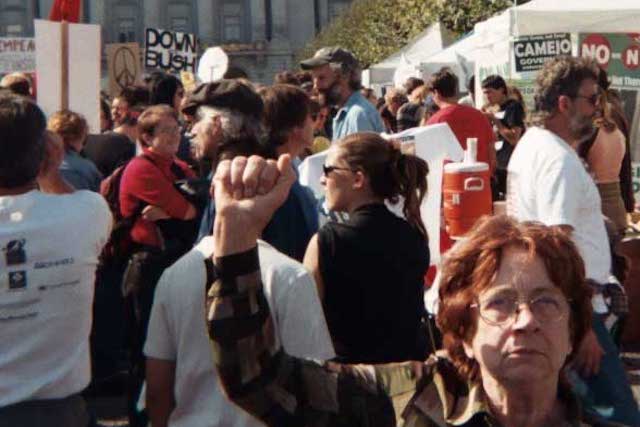
The decision to invade Iraq had been in the works for some time within the Bush administration. Members of the Bush administration had been looking for reasons to invade for years, with Vice President Dick Cheney and Secretary of Defense Donald Rumsfeld at the helm of the issue. When 9/11 happened, the administration decided to use it to justify its decisions through the “war on terror.”
The United States gave many reasons for slowly preempting the coming invasion, but the one that made the decision for them has been a stain on American foreign policy for decades.
On February 5, 2003, Secretary of State Colin Powell was at the United Nations giving what was supposed to be a coherent speech explaining the reasons for the imminent invasion of Iraq. The problem with the speech, however, was that many of the claims were built on both weak and unreliable intelligence. The war in Iraq was built on the claim that Saddam Hussein either had or was building weapons of mass destruction. It was all lies.
A few weeks after Powell's speech at the UN and a month before the invasion began, millions of people around the world began protesting the war in Iraq before it even began. In New York, 200,000 people protested the war, and in some European cities, millions of people. In total, 600 cities around the world took part in the protest. Unfortunately, the wheels were in motion, and the forces were determined to see the mission through to the end. The war in Iraq began on March 19, 2003, and lasted almost a decade, ending on December 15, 2011. No weapons of mass destruction were ever found.
9. Orange Revolution
It was 2004, when Ukraine's elections brought the country to its knees. As hundreds of thousands of Ukrainian citizens filled Kyiv's main square, protests against the election results began. So how did it come to this?
In Ukraine's 2004 presidential election, then-President Leonid Kuchma was expected to run for a third term, a move recently cleared by the Constitutional Court. But he surprised everyone by endorsing Viktor Yanukovych, who had friendly ties and support from Vladimir Putin. During the runoff, a challenger emerged with a better chance of defeating Yanukovych: Viktor Yushchenko.
The campaign was brutal, but Yushchenko was becoming a thorn in Yanukovych's side. By September, something had changed, Yushchenko fell ill, and it was later discovered that he had been poisoned with dioxin. When the election came, both Yanukovych and Yushchenko won the first few rounds, and Yanukovych eventually won the election. However, most Ukrainians did not believe the results, and protests began.
There were 12 days of demonstrations in Kyiv before the Supreme Court declared the December 3 election invalid and scheduled a new round for December 26. Yushchenko won the election. While in power, his presidency lost much support and was less successful than people had hoped. Despite this, the Orange Revolution brought him to power, defeating corruption and ensuring the victory of democracy.
8. Protestant Reformation

When it comes to the Protestant Reformation, it's interesting because this whole protest started with a very important invention, the printing press. At the center of the Protestant Reformation is Gutenberg and his printing press.
The Protestant Reformation took place in Europe in the 1500s and resulted in a new branch of Christianity known as Protestantism. The term Protestantism referred to all religious groups that separated from the Roman Catholic Church. The main reason for this separation was doctrinal differences, and it all began in Wittenberg, Germany, when Martin Luther published his document, "The Dispute on the Power of Indulgences" October 31, 1517.
Luther's document was also known as the "95 theses " The document's 95 ideas about Christianity challenged what everyone knew based on the teachings of the Catholic Church and opened the door for debate. As you might guess, the Catholic Church was none too pleased with this blatant descent and attempted to suppress the movement that was sweeping across Europe. However, it was too late, religions and church authorities were being challenged in many ways, all thanks to Martin Luther, a monk and teacher who questioned the influence of the Catholic Church.
This protest began with a simple document being nailed to a door and then the distribution of pamphlets. The Reformation would see significant changes in the power of the church over the state, one such example being Henry VIII removing religious influence in England, putting the Bible into the hands of the people and dissolving the monasteries and their wealth.
7. Gandhi's Salt March
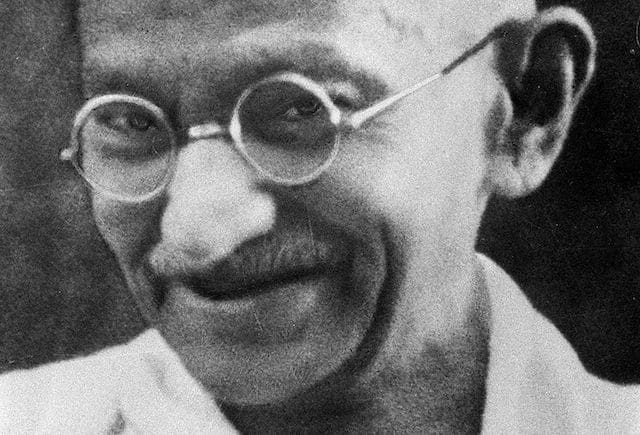
India was under British rule from 1858 to 1947 and they laid down a new law known as the British Salt Act of 1882. This law stipulated that Indians were prohibited from collecting and selling salt. As a result of this law, Indians were forced to buy salt from the British rulers who had a monopoly on the vital mineral and its sale. To make matters worse, they levied a huge tax on salt. This led to the misery of many in India as salt was a staple food for them.
The Salt March began on March 12, 1930, but was announced 10 days earlier, on March 2, by Gandhi, who sent a letter to Viceroy Lord Irwin. The protest lasted 24 days, beginning with Gandhi and dozens of followers heading to Dandi.
On April 5, they reached the coastal town of Dandi with a crowd that now numbered tens of thousands of protesters. Early the next morning, they set out for the Arabian Sea to collect salt. The British, already aware of his plans thanks to Gandhi's letter, had destroyed the salt flats on the shore. Undeterred, Gandhi collected small lumps of natural salt from the mud and officially broke the British Salt Law. This spread to coastal towns and villages across India.
The Salt March eventually led to increased civil disobedience and rioting across India. Eventually, 60,000 people were arrested; among them was Gandhi, who was arrested on May 5. However, the protests did not stop.
The protest had an incredible impact on India as it brought worldwide recognition to British policy in India and paved the way for Indian independence, which was achieved in 1947. While the problems in India were far from resolved, the Salt March remains one of the most important events in the formation of an independent India.
6. Boston Tea Party
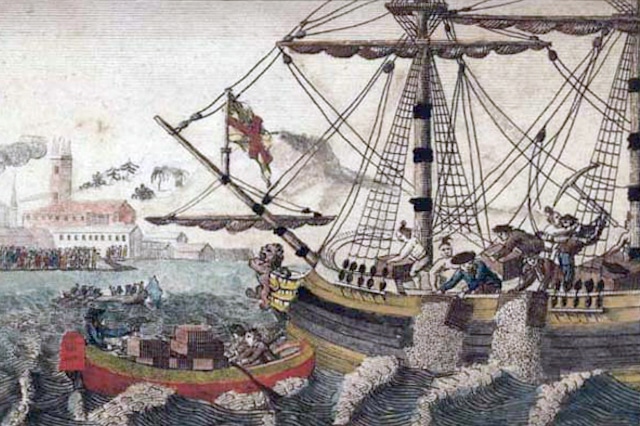
The British Empire was in extreme decline in the 1760s and much of the 16th century. So, to solve their financial problems, they turned to their colonies in America. The British began taxing everything they could, starting with the Stamp Act of 1765. This act taxed all forms of paper documents in the colonies. They took it a step further with the Townshend Acts of 1767, which taxed necessities such as glass, paper, lead, paint, and tea.
The British thought the taxes were fair because most of their financial problems were caused by fighting wars on the colonists' side. However, the colonists disagreed and were furious at being taxed without representation. These two tax acts were the starting point for significant civil unrest in the 13 colonies.
The first major clash was a bloody riot, now known as the Boston Massacre, on March 5, 1770. This riot fueled anti-British sentiment. During this conflict, back in Britain, the Prime Minister demanded the repeal of the Townshend Acts, which they were, with the exception of the tax on tea, which was one of the highest revenue sources.
The Tea Act of 1773 was designed to help the struggling East India Company. The act allowed the EIC, a major force in the British economy, to monopolize the import and sale of tea in the colonies. The Sons of Liberty, a group of colonial merchants and traders, rallied against the East India Company ships arriving at Griffin’s Wharf. Despite this, they arrived on December 16, 1773. That night, a group of nearly 100 men disguised as Native Americans boarded the ships and, in just three hours, unloaded 342 chests containing 45 tons of tea into Boston Harbor.
Of course, this event had its consequences for the colonists, but it was an important moment in American history and their quest for independence, which they later achieved in 1776 through the American Revolution.
5. Protests at the Berlin Wall
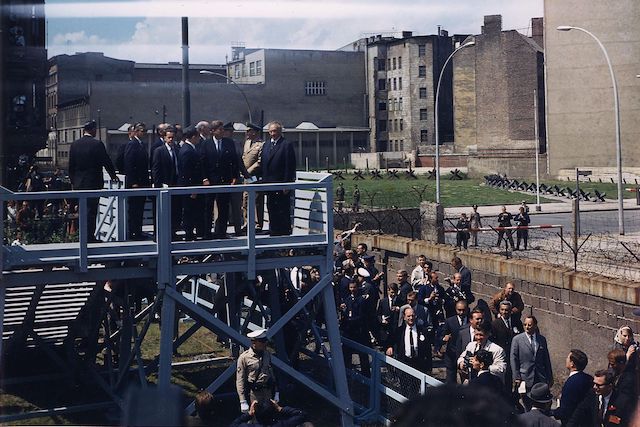
Post-war Germany was a mess. There is no better image of this than the Berlin Wall. As a result of World War II, the country was divided into four “Allied occupation zones” and handed over to the various war allies. Thus, East Germany was given to the USSR, and the West was divided between the USA, Great Britain and France.
Tensions between the West and the USSR began to worsen relatively soon after World War II. The construction of the Berlin Wall is one of many examples of the deterioration of relations between different nations during the Cold War. On August 12, 1961, the border in East Germany was permanently closed and construction of the Berlin Wall began. The makeshift wall was built within two weeks, making it virtually impossible to enter or leave East Germany.
The main reason for the wall, at least in the Soviets' view, was to keep out the Western fascists. But the real reason for the Berlin Wall was the harsh reality of the mass exodus from East to West Germany.
The Berlin Wall lasted for nearly three decades. In 1989, tensions in East Germany were high due to economic problems, food shortages, and fears that the communist bloc would collapse after Chernobyl. On November 4, half a million East Germans began a mass protest on Alexanderplatz in East Berlin.
On November 9, Günter Schabowski, a high-ranking East German communist, held a press conference. He was to announce new rules for travel between East and West Germany in the hopes of quashing the protests. But he didn’t even have time to read the new rules before he went to the press conference. When he announced the easing of border regulations, he said the order was effective immediately. In fact, it wasn’t until the following day. That day, thousands of people crossed the border between East and West Germany. Crowds of Germans began dismantling the wall, ending nearly three decades of separation.
4. Defiance Campaign in South Africa
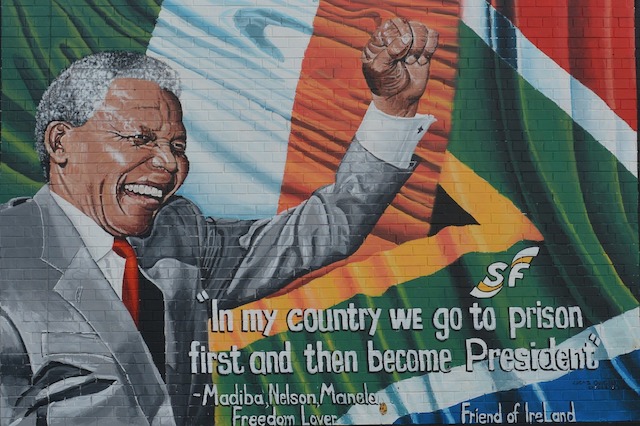
In 1948, South Africa began a nearly half-century-long campaign of oppression known as apartheid. Apartheid was a means of regulating relations between South Africa's white minority and black majority. The law sanctioned segregation, discrimination, and criminalization of black people.
Four years later, on 26 June 1952, the Defiance Campaign was launched by leaders including the African National Congress (including Nelson Mandela), the Franchise Action Council and the South African Indian Congress. It is important to understand that during apartheid, these factions had no political representation in any form of Afrikaans government. The protest was meant to be peaceful, but the punishment for such offences was particularly severe, sometimes even fatal.
During this protest, thousands of black South Africans openly defied unjust laws, went on strike, and caused widespread civil disobedience. In the first years of this protest, some 8,000 people were arrested. The campaign led to some extreme steps by the Afrikaans government, including new laws and raids on political offices. Ultimately, the campaign was unsuccessful. It achieved its goal of causing chaos, but did not change the situation. Instead, laws became stricter, fines higher, and sentences longer. The Defiance Campaign was the first major multicultural demonstration against apartheid; one South Africa does not forget.
3. Storming of the Bastille

In the late 18th century, France was on the verge of bankruptcy due to its involvement in the American Revolution and the spending habits of King Louis XVI. This was made worse by the fact that the country had suffered several years of terrible harvests, drought, soaring bread prices, and livestock disease. All of this led to increasing civil unrest throughout the country. The French Revolution unofficially began in 1787 against the King of France and what we now call the ancien régime (old order), which was a class-based political system that divided citizens into three estates: the clergy (First Estate), the nobility (Second Estate), and everyone else (Third Estate).
In response to the unrest, attempts to moderately change France began with the drafting of a constitution. However, these negotiations broke down as the three estates reached an impasse, causing the Third Estate to break away from the Traditional Assembly. The newly formed members of the National Assembly took an oath, now known as the Tennis Court Oath, to draft a constitution, a powerful act of defiance against the king.
Fears grew that King Louis XVI would send an army to crush the informal National Assembly. As a result, French citizens took to the streets, heading into central Paris to defend the rights of the people. On July 14, 1789, a crowd gathered around the Bastille prison, armed with swords, muskets, and other weapons, including homemade ones. The protesters stormed the Bastille, capturing and killing the military governor, seizing 250 barrels of gunpowder, and taking control of the Bastille.
This moment is significant because it marked the official beginning of the French Revolution and gave incredible momentum to a struggle that would last for decades. This historic moment demonstrated the power of the people and helped shape the ideas on which modern democracies are built. The Bastille symbolized the dictatorial rule of the monarchy and, with its fall, the rule of law and the power of the monarchy. By 1792, the monarchy was officially abolished with the beheadings of Louis XVI and Marie Antoinette.
2. Tiananmen Square
If we look at China, it is not a country of protest, and for good reason. For over a century, the Chinese Communist Party (CCP) has been known for wielding enormous power and influence over its people. It is a very complex country, known for many things, both good and bad, but it is not known for protests or uprisings because they are rare.
In the 1980s, China was changing. The CCP became increasingly receptive to private companies and foreign investment, and gradually began to open up to the world, albeit in a limited way. These changes were implemented by Deng Xiaoping, who served as the supreme leader of the People's Republic of China. However, this created some problems.
Civil unrest in China was caused by several factors, including restrictions on political freedom, ongoing economic problems, lack of jobs, increasing poverty, and inadequate education that did not prepare students for China's free-market capitalist economy. This led to student protests that began on May 13, 1989.
On May 20, martial law was declared, 250,000 troops were sent to Beijing, and by the end of May, the protests had grown to about a million protesters. The marches were relatively peaceful until June 4. The CCP hoped that the military presence would be enough to suppress the protests, but they were wrong. So, early in the morning of June 4, soldiers and tanks descended on the square, firing live ammunition into the crowds and causing what became known as the Tiananmen Square massacre.
The exact number of people killed or arrested that day remains unclear. Western journalists on the scene said they estimated that hundreds to thousands of people, mostly protesters, died. By June 5, they had secured the square and shown the Chinese people what a descent could bring.
1. March on Washington
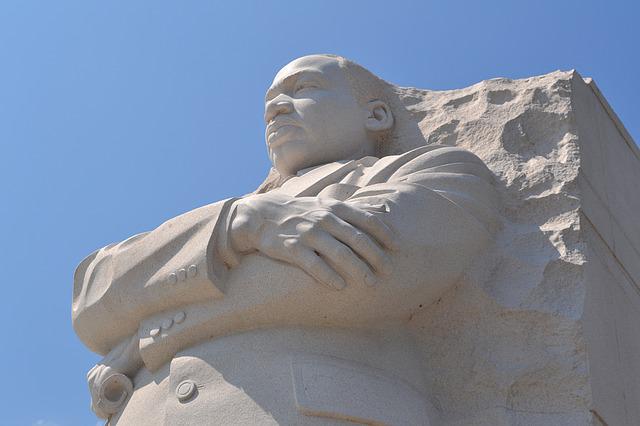
American history is filled with civil unrest and protests. Many of these protests and conflicts stem from the same source: race relations. Slavery ended in the 19th century, 1865 to be exact, but that didn’t mean the United States was where it needed to be with equality. Segregation existed in many forms throughout the country in the form of Jim Crow laws. These laws were designed to separate white and black Americans by discriminating against African Americans’ ability to vote, get an education, hold a job, etc. Failure to comply with these laws resulted in, for the most part, imprisonment, fines, violence, and even death.
Throughout American history, there have been many instances where race relations have been challenged. However, on August 28, 1963, one of the most famous examples of such a demonstration occurred. Led by famed civil rights leaders Martin Luther King, Jr., A. Phillip Randolph, Bayard Rustin, and John Lewis, more than 250,000 people of all races gathered at the Lincoln Memorial on the National Mall to demand equal justice for all citizens under U.S. law.
In July 1963, President Kennedy proposed the Civil Rights Act. Although he initially hesitated in 1961 when he began his presidency, protests across the country, particularly in the South, made the issue much harder to ignore. The March on Washington spawned one of the world's most famous speeches, Martin Luther King's "Will You Be a Civil Rights Act?" I have a dream" .
As we know from history, Kennedy was assassinated in November 1963, leaving the Civil Rights Act in the hands of the newly sworn in Lyndon B. Johnson, and the law was signed into law in 1964. The March on Washington was one of countless protests that took place across the country in an attempt to strengthen equality for all, a fight that continues to this day.













Оставить Комментарий